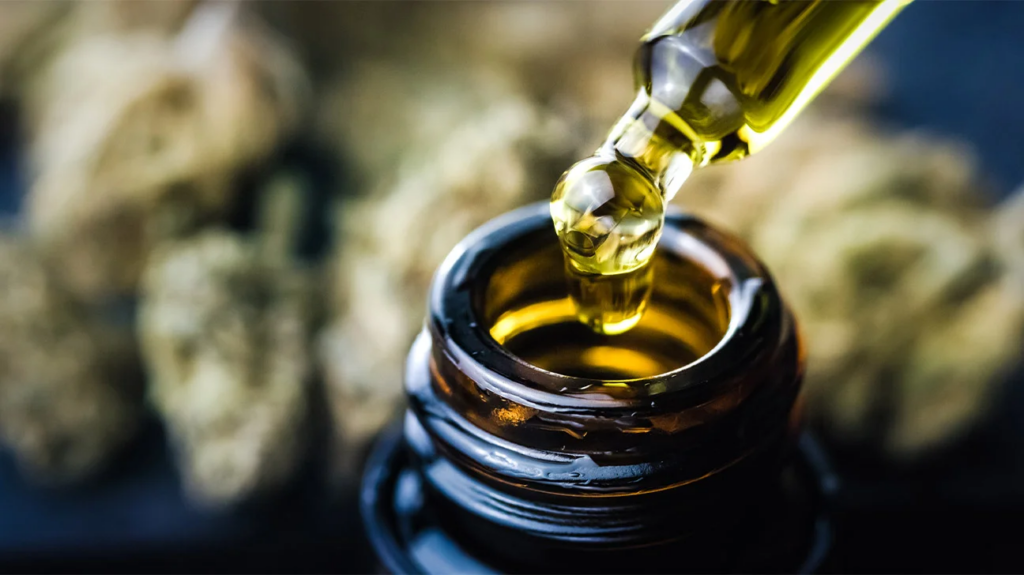
What Is CBG? Benefits, Risks And More

Introduction
Cannabigerol, commonly referred to as CBG, is a fascinating cannabinoid found in the cannabis plant. While it may not be as well-known as THC or CBD, CBG is gaining attention for its potential therapeutic benefits and unique properties. In this comprehensive article, we will delve into what CBG is, its potential benefits, associated risks, current research findings, and its legal status.

What Is CBG (Cannabigerol)?
CBG, short for cannabigerol, is one of the many cannabinoids found in the cannabis plant. It is considered a minor cannabinoid, typically present in lower concentrations compared to THC (tetrahydrocannabinol) and CBD (cannabidiol). CBG is often referred to as the “stem cell” or “parent cannabinoid” because it serves as a precursor to other cannabinoids, including THC and CBD.
How Is CBG Produced?
During the early stages of a cannabis plant’s growth, CBG is present in higher concentrations. As the plant matures, enzymes within the plant convert CBG into other cannabinoids, such as THC or CBD. This conversion process is why CBG is usually found in smaller amounts in mature cannabis plants.
Potential Benefits of CBG

CBG oil has garnered attention for its potential therapeutic benefits, although it’s important to note that research is ongoing, and more extensive studies are needed to confirm these effects. Some of the potential benefits of CBG include:
- Pain Relief: CBG may have analgesic (pain-relieving) properties, making it a potential candidate for managing chronic pain conditions.
- Anti-Inflammatory Effects: CBG’s anti-inflammatory properties could be beneficial for individuals with inflammatory disorders, such as arthritis or Crohn’s disease.
- Antibacterial Properties: CBG has shown promise as an antibacterial agent, particularly in combating antibiotic-resistant bacteria like MRSA (Methicillin-resistant Staphylococcus aureus).
- Neuroprotection: Preliminary studies suggest that CBG may offer neuroprotective benefits, potentially contributing to the treatment of neurodegenerative diseases like Huntington’s disease.
- Appetite Stimulation: CBG may stimulate appetite, which could be helpful for individuals with conditions causing reduced appetite or unintentional weight loss.
- Glaucoma Management: Some research suggests that CBG may help reduce intraocular pressure, making it a potential option for glaucoma management.
- Mood Regulation: CBG’s interaction with the endocannabinoid system (ECS) may influence mood and anxiety, although more research is needed in this area.
Risks and Side Effects
While CBG is generally considered safe, it’s essential to be aware of potential risks and side effects, including:
- Psychoactivity: Unlike THC, CBG is non-psychoactive, meaning it does not produce a “high.” However, the psychoactive effects of THC can be amplified when combined with CBG, so cautious use is advised.
- Dry Mouth: As with many cannabinoids, CBG may cause dry mouth, also known as “cottonmouth.”
- Dizziness: Some individuals may experience dizziness or lightheadedness when using CBG, especially at higher doses.
- Changes in Blood Pressure: CBG may temporarily affect blood pressure, causing a drop in some cases. Individuals with blood pressure issues should exercise caution.
- Gastrointestinal Issues: CBG can occasionally lead to digestive discomfort, including diarrhea.
- Interaction with Medications: CBG may interact with certain medications, so it’s essential to consult a healthcare professional if you are taking medication or have underlying health conditions.
Current Research on CBG
Research on CBG is still in its early stages, and while there is promising preclinical and animal research, more extensive human studies are needed to confirm its potential benefits. Some noteworthy findings include:
- Pain Management: A study published in the “Journal of Dermatological Science” in 2010 found that CBG could be effective in reducing pain and inflammation in a mouse model of inflammatory skin diseases.
- Antibacterial Properties: A 2020 study in “ACS Infectious Diseases” demonstrated that CBG was effective in combating MRSA, a drug-resistant bacterium.
- Neuroprotection: Research published in “Neurotherapeutics” in 2015 suggested that CBG may have neuroprotective properties and could potentially be explored for neurodegenerative diseases.
- Appetite Stimulation: An animal study published in “Planta Medica” in 2016 found that CBG increased food intake, indicating its potential as an appetite stimulant.
- Glaucoma Management: A study published in the “Journal of Ocular Pharmacology and Therapeutics” in 2008 suggested that CBG may help reduce intraocular pressure, a key factor in glaucoma management.
Legal Status of CBG
The legal status of CBG varies from one region to another. In the United States, CBG derived from industrial hemp (cannabis plants containing less than 0.3% THC) is generally considered legal under the 2018 Farm Bill. However, it’s essential to check your local laws and regulations, as they can vary by state and country.
How to Use CBG
CBG is available in various forms, including oils, tinctures, capsules, edibles, and topicals. The choice of product depends on your preferences and the desired effects. When using CBG, it’s crucial to start with a low dose and gradually increase it until you achieve the desired results. Consultation with a healthcare professional experienced in cannabinoid therapy can provide personalized guidance, especially if you have underlying health conditions or are taking medications.
Mechanisms of Action of CBG
CBG interacts with the body’s endocannabinoid system (ECS), a complex network of receptors, endocannabinoids produced by the body, and enzymes responsible for their synthesis and breakdown. Understanding how CBG engages with the ECS provides insights into its potential benefits:
- CB1 and CB2 Receptors: CBG interacts with both CB1 and CB2 receptors, though not as strongly as THC. CB1 receptors are primarily found in the central nervous system, while CB2 receptors are predominantly in the peripheral nervous system and immune cells. This interaction can modulate various physiological processes, potentially contributing to CBG’s effects on pain, inflammation, and more.
- Endocannabinoid Production: CBG may influence the production of endocannabinoids like anandamide and 2-AG (2-arachidonoylglycerol), which play essential roles in maintaining balance within the body. By affecting endocannabinoid levels, CBG could help regulate mood, pain perception, and other processes.
- Enzyme Inhibition: CBG may inhibit the enzyme responsible for breaking down anandamide, called fatty acid amide hydrolase (FAAH). This inhibition can lead to increased levels of anandamide, potentially contributing to a sense of well-being and pain relief.
- G Protein-Coupled Receptors: CBG also interacts with various other receptors, including 5-HT1A receptors (associated with serotonin regulation) and alpha-2 adrenergic receptors (involved in the fight-or-flight response), which may influence mood and anxiety.
Comparing CBG to Other Cannabinoids
CBG shares some similarities with other cannabinoids, such as CBD and THC, but also exhibits distinct differences:
CBG vs. CBD
Both CBG and CBD are non-psychoactive cannabinoids, meaning they do not induce a “high.” However, they have different mechanisms of action and potential effects. While CBD primarily interacts with CB2 receptors and modulates various receptor systems, CBG’s effects may be more diverse due to its interaction with both CB1 and CB2 receptors. Additionally, CBG’s potential benefits, such as antibacterial properties, differ from CBD.
CBG vs. THC
Unlike THC, which is psychoactive and known for its intoxicating effects, CBG does not produce a euphoric high. This non-psychoactive nature makes CBG an attractive option for individuals seeking the potential therapeutic benefits of cannabinoids without the impairment associated with THC.
CBG vs. CBN
CBG and CBN (Cannabinol) are often found together in aged cannabis plants. While both may have potential sleep-inducing properties, they differ in their mechanisms of action and potential applications. CBG’s effects on sleep are still being explored, while CBN is often associated with sedation.
Conclusion
Cannabigerol (CBG) is a lesser-known cannabinoid with promising potential therapeutic benefits. While research is still evolving, early studies suggest that CBG may be effective in managing pain, inflammation, bacterial infections, and more. However, it’s crucial to be aware of potential risks and side effects and consult with a healthcare professional before incorporating CBG into your wellness routine, especially if you have specific health concerns or are taking medications. As more research unfolds, we can expect to gain a deeper understanding of CBG’s full range of benefits and applications.